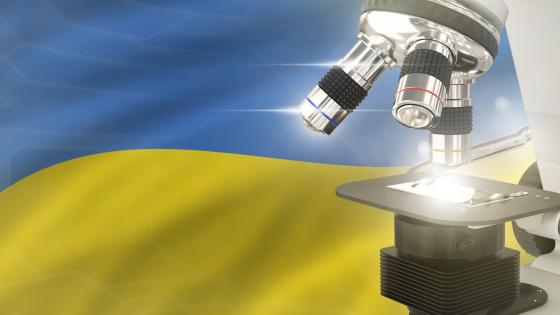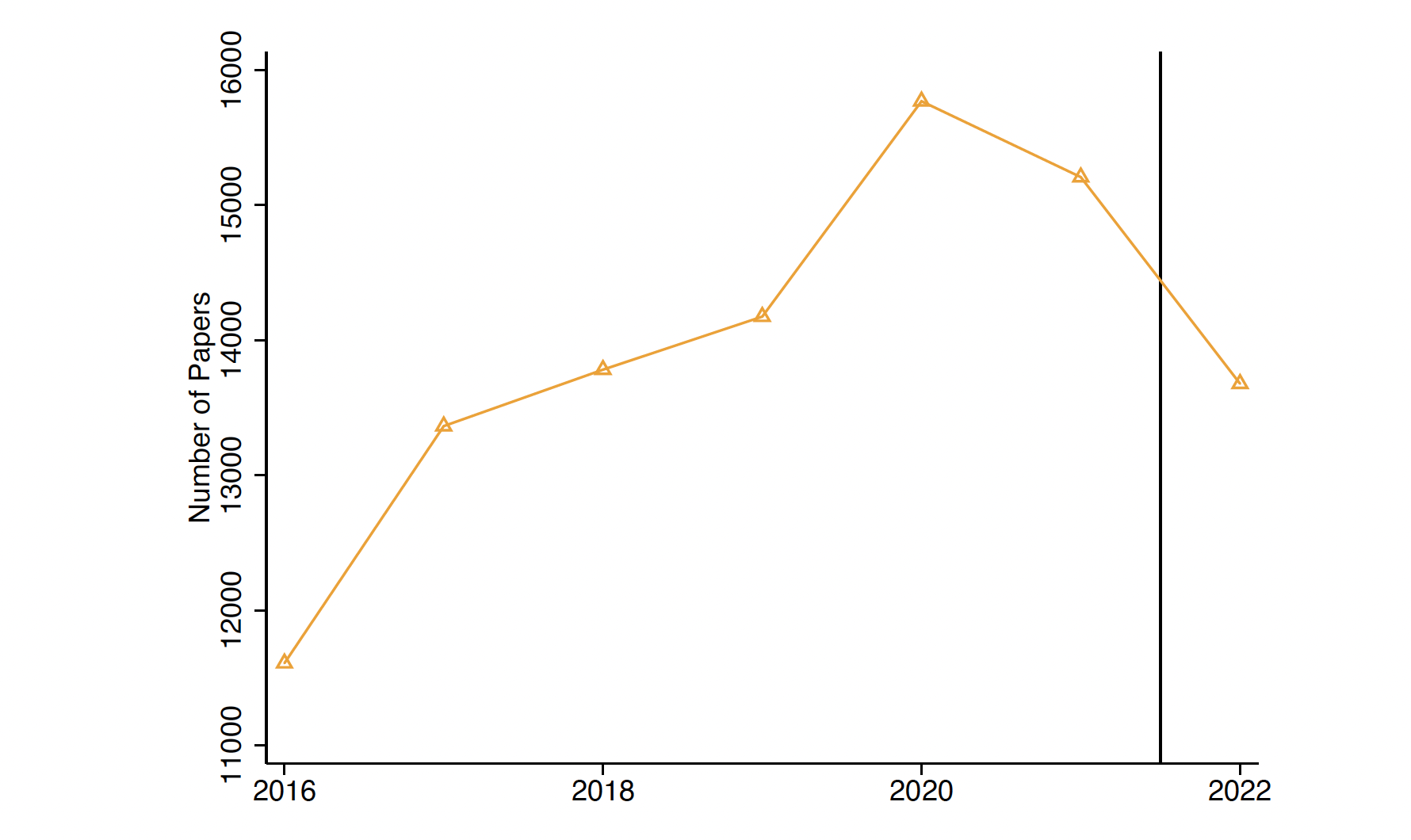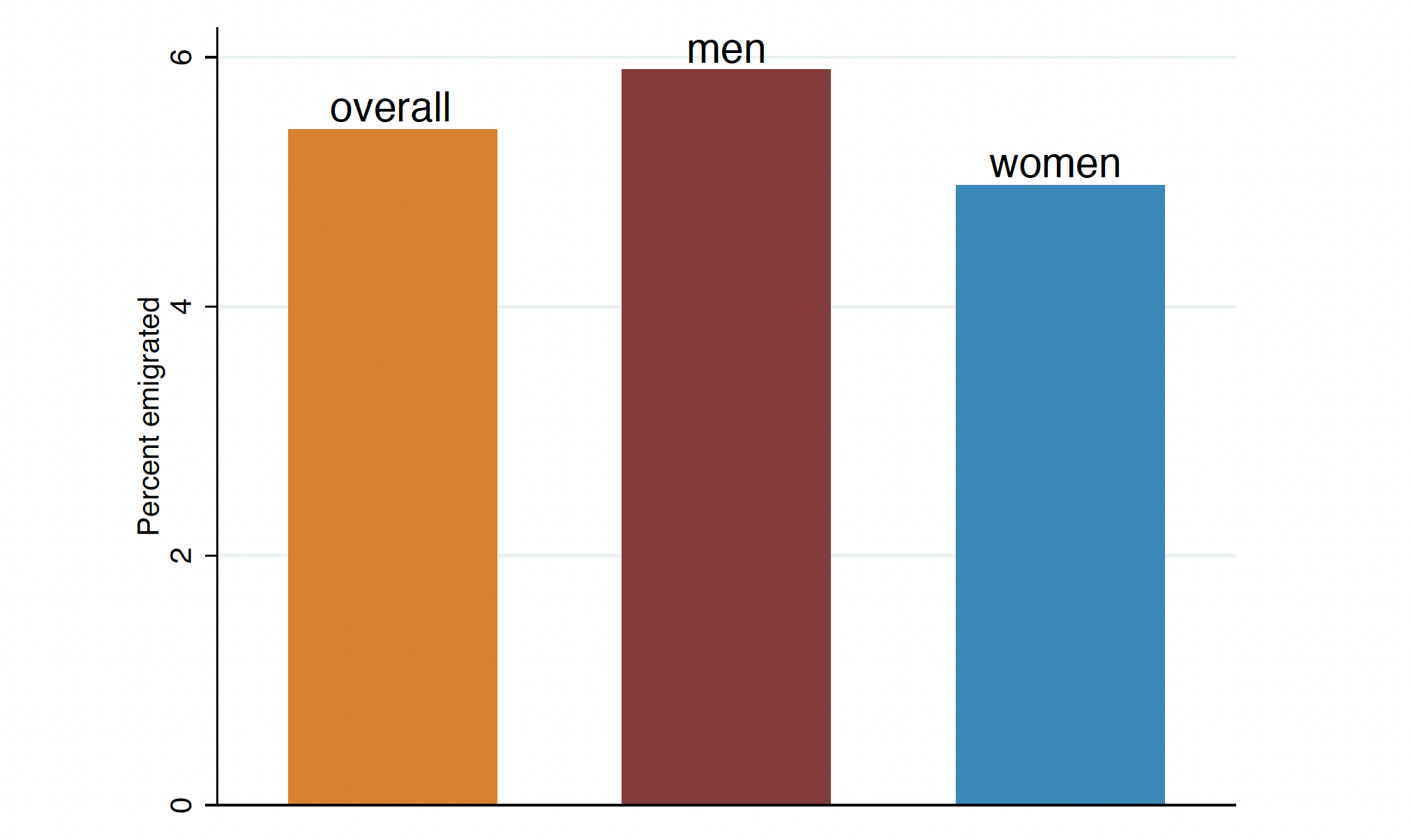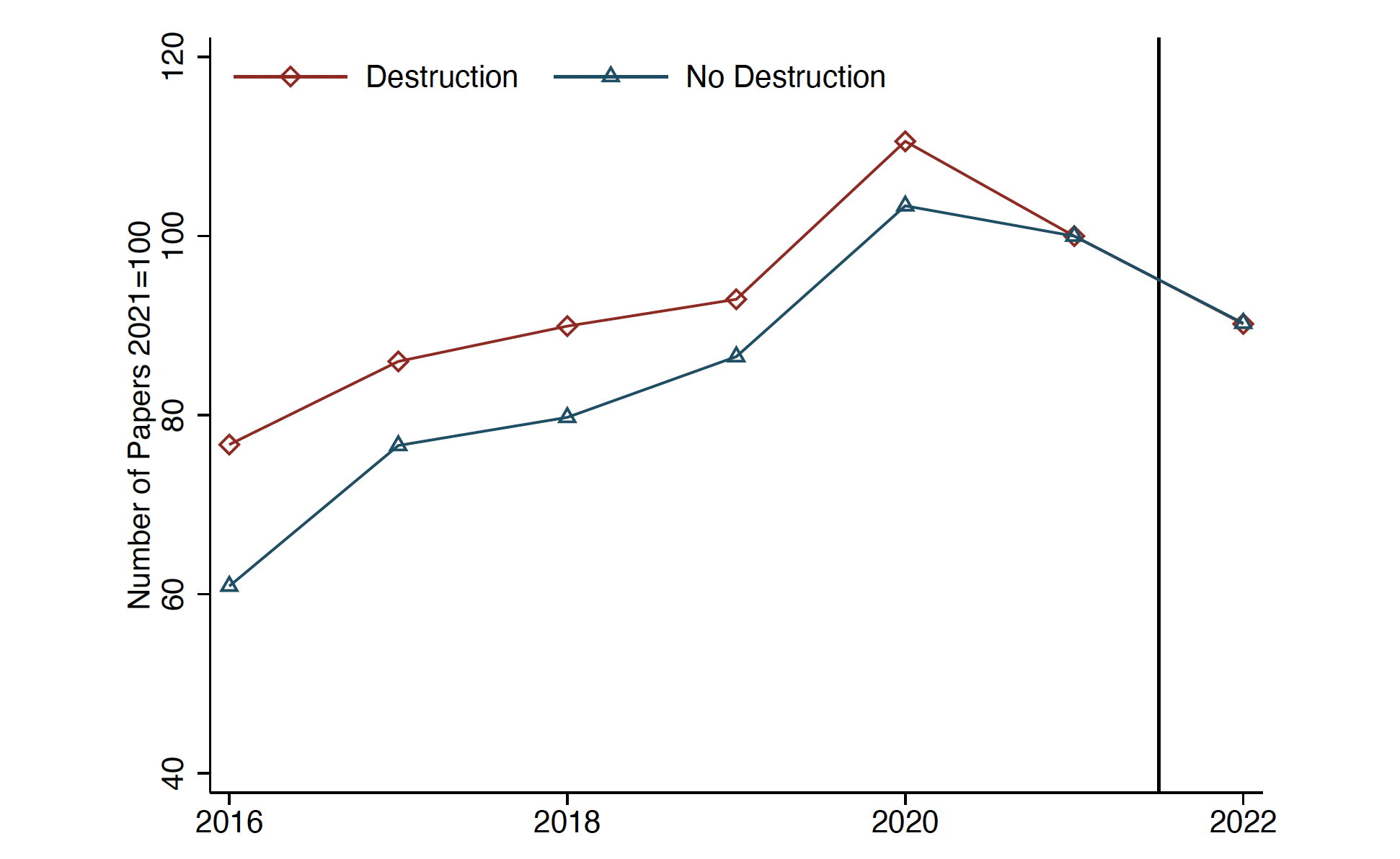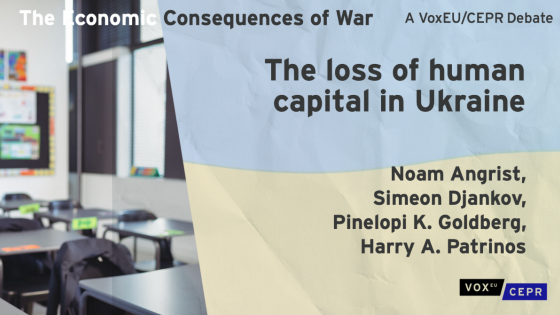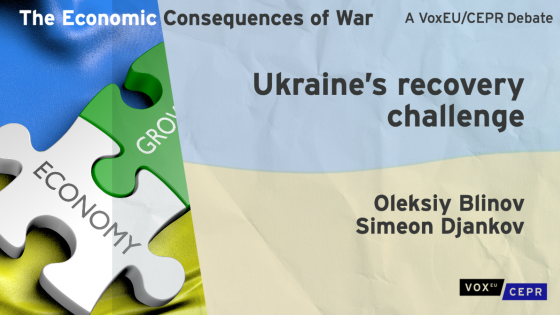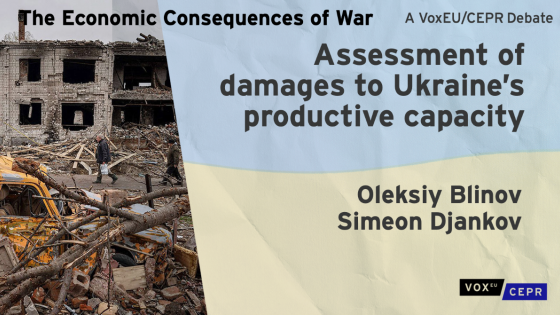On 24 February 2022, Russian troops started a full-scale invasion of Ukraine, which disrupted ordinary life (e.g. Kappner et al. 2022) and profoundly impacted the country's universities and research institutes. This calls for careful analysis of how the war has already impacted science in Ukraine and in developing policies that will safeguard the future of science in Ukraine. Recent literature on the economics of science and innovation has analysed how wars and other crises affect science (e.g. Gross and Sampat 2020, Iaria et al. 2018a, 2018b, Abramitzky and Sin 2014, Waldinger 2010, 2012, 2016, Borjas and Doran 2012, Ganguli 2017, Becker et al. 2023).
In Ganguli and Waldinger (2023), we present new facts on the impact of the war on Ukrainian science. We then draw on the economics of science and innovation literature on war and other crises to point to the channels through which science is affected by war and conflict. Our newly collected data indicate that the conflict has already significantly impacted the country's scientific community. We reveal a 10% decline in research papers published by Ukrainian scientists since the beginning of the war (Figure 1). Since scientific papers tend to be published with significant delays, this likely underestimates the medium to long-run effect of the war on Ukrainian scientific production.
Figure 1 Number of publications by Ukrainian scientists
Three primary channels may drive this decline in scientific production. First, the war has adversely affected human capital, i.e. scientists conducting research in universities and laboratories. Many scientists have been forced to flee their homes and relocate to other parts of Ukraine or abroad. Others have joined the army to fight or were directly killed in the war. Second, the war may have affected physical capital as classrooms, laboratories, and other essential facilities have been damaged or destroyed. Third, the war has also hindered the exchange of scientific knowledge and ideas, as travel restrictions have made it more difficult for researchers to attend conferences, seminars, and travel to work with coauthors.
We next discuss the likely consequences of these shocks to human capital, physical capital, and to international collaborations, described in further detail in Ganguli and Waldinger (2023).
Loss of human capital
The war in Ukraine has already disrupted the lives of scientists in Ukrainian research institutions and universities. Many had to flee their homes, relocate to other parts of Ukraine or even abroad, or join the army.
In the context of war, it is difficult to measure emigration systematically. To overcome some of these challenges, we collect data on 535 elite Ukrainian scientists working in the top 100 Ukrainian research institutions before 2022. These data enable us to provide alternative estimates of international migration rates of Ukrainian scientists that are based on affiliations reported in publications. We then classify scientists as having emigrated if they published a (working) paper in 2022 or 2023 with a foreign affiliation.
Figure 2 Emigration rates of Ukrainian scientists
We observe that 5.4% of these elite scientists have already emigrated since the beginning of the war (Figure 2). Interestingly, women have slightly lower emigration rates in this sample than men. Emigration rates among elite Ukrainian scientists may, as yet, be relatively low for multiple reasons. First, since the imposition of martial law, men between the ages of 18 and 60 have been prohibited from leaving the country. Second, finding an attractive academic position abroad is difficult to organise in such a short time period, even for elite scientists. Third, Ukrainian scientists may have joined the military effort. Finally, they may have a strong attachment to Ukraine or feel responsible for contributing to Ukrainian science.
Destruction of physical capital
The war in Ukraine also had a devastating impact on the country's scientific infrastructure. To understand how the destruction of physical capital has affected Ukrainian research output, we collect new data on physical destruction among the top 100 Ukrainian universities. For this purpose, we search for news articles and other online information. For example, the BBC reported that "a Karazin National University building in central Kharkiv caught fire after being hit by a missile". Based on such information, 22 of the top 100 universities have had some war-related damage.
To gauge the short-run impact of physical destruction on scientific production, we compare trends in the number of papers in universities with and without war-related destruction. To ease comparison, we normalise the number of papers in each group to 100 for 2021, the last year before the war. Between 2021 and 2022 the total number of papers declined in both groups of universities (Figure 3). However, there was no disproportionate decline in universities that experienced physical destruction. These results suggest that the destruction of research laboratories and other physical capital did not predominately drive the decline in Ukrainian scientific output between 2021 and 2022. Instead, it suggests that shocks to scientific human capital are the primary source of the decline.
Figure 3 Number of publications by destruction of physical capital
Disruption of knowledge flows
In addition to losing human and physical capital, the war has also hindered the exchange of scientific knowledge and ideas. Travel restrictions and the general insecurity in the country have made it more difficult for Ukrainian researchers to attend conferences and seminars and travel to work with coauthors.
To study the short-run effects of the war on international scientific collaborations of Ukrainian scientists, we collect new data on international coauthorships from Clarivate Web of Science. The data contain all papers in the Web of Science that were published with at least one Ukrainian coauthor.
Coauthoring of Ukrainian scientists with authors from Western Europe, Eastern Europe, and North America remained almost constant between 2021 and 2022 (Figure 4). In sharp contrast, the share of coauthoring with coauthors in Russia declined by more than 40%. This decline is even more dramatic if one considers that the Russian invasion did not commence until 24 February 2022 and that there are substantial publication lags in the sciences. The share of coauthoring with coauthors in Belarus declined by more than 30%.
Figure 4 Share among foreign coauthors (percentage change, 2021-22)
Safeguarding the future of Science in Ukraine
Our newly collected data suggest that shocks to human capital, and a decline in international scientific cooperation, are the main causes of the reduction in research papers by Ukrainian scientists. Shocks to physical capital have not yet impacted research output.
These short-run patterns for the war in Ukraine mirror the effects that the economics of science literature has uncovered for earlier wars, such as WWI (e.g. Iaria et al. 2018) or WWII (e.g. Waldinger 2010, 2012, 2016, Moser et al. 2014), and other crises, such as the collapse of the Soviet Union (e.g. Borjas and Doran 2012, 2015, Ganguli 2014, 2017, Abramitzky and Sin 2014), on scientific output.
This suggests that lessons from earlier episodes of war and conflict provide substantive insights into Ukrainian science's trajectory and on appropriate interventions that could safeguard Ukrainian science for the post-war future. The literature has generally found that wars impact science primarily through effects on scientific human capital (e.g. through emigration or occupational mobility) and that physical capital shocks are easier to overcome. Furthermore, shocks to human capital can be very long-lasting because such shocks can become self-reenforcing.
Based on these findings, we argue that policies that prioritise the mitigation of shocks to human capital (and to scientists' access to international knowledge) are likely to have the greatest effect on safeguarding Ukraine's scientific potential. The post-war recovery of science in Ukraine could be accelerated by supporting scientists who remain in the country to continue their research through grants and virtual or non-resident fellowship programs, especially those that provide interactions between Ukrainian scientists and the international scientific community. In addition, facilitating return migration for scientists who have left Ukraine will be an essential priority after the war has ended.
While calls to reconstruct damaged facilities are important, such shocks to physical capital can be mitigated as long as sufficient funds for reconstruction are made available. The reconstruction of facilities will only help post-war science in Ukraine if the scientists and researchers who work in these buildings remain in the country or return after the end of hostilities and continue to work in the science sector.
References
Abramitzky, R and I Sin (2014), “Book Translations as Idea Flows: The Effects of the Collapse of Communism on the Diffusion of Knowledge”, Journal of the European Economic Association 12(6): 1453–1520.
Becker, S O, V Lindenthal, S Mukand, and F Waldinger (2023), “Scholars at Risk: Professional Networks and High-Skilled Emigration from Nazi Germany”, American Economic Journal: Applied Economics, forthcoming.
Borjas, G J and K B Doran (2012), “The Collapse of the Soviet Union and the Productivity of American Mathematicians”, The Quarterly Journal of Economics 127(3): 1143–1203.
Borjas, G J and K B Doran (2015), “Which Peers Matter? The Relative Impacts of Collaborators, Colleagues, and Competitors”, Review of Economics and Statistics 97(5): 1104–1117.
Ganguli, I (2014), “Scientific brain drain and human capital formation after the end of the Soviet Union”, International Migration 52(5): 95–110.
Ganguli, I (2017), “Saving soviet science: The impact of grants when government R&D funding disappears”, American Economic Journal: Applied Economics 9(2): 165–201.
Ganguli, I and F Waldinger (2023), “War and Science in Ukraine. Entrepreneurship and Innovation Policy and the Economy 3”, forthcoming.
Gross, D P and B N Sampat (2020), “America, Jump-started: World War II R&D and the Takeoff of the U.S. Innovation System”, NBER Working Paper 27375.
Iaria, A, C Schwarz, and F Waldinger (2018), “Frontier Knowledge and Scientific Production: Evidence from the Collapse of International Science”, The Quarterly Journal of Economics 133(2): 927–991.
Iaria, A, C Schwarz, and F Waldinger (2018), “The importance of frontier knowledge for the generation of ideas”, VoxEU.org, 26 Jan.
Kappner, K, N Szumilo, and M Constantinescu (2022), “Estimating the short-term impact of the war on economic activity in Ukraine”, VoxEU.org, 21 Jun.
Moser, P, A Voena, and F Waldinger (2014), “German Jewish Émigrés and U.S. Invention”, American Economic Review 104(10): 3222–3255.
Waldinger, F (2010), “Quality Matters: The Expulsion of Professors and the Consequences for PhD Student Outcomes in Nazi Germany”, Journal of Political Economy 118(4): 787–831.
Waldinger, F (2012), “Peer effects in science: Evidence from the dismissal of scientists in Nazi Germany”, The Review of Economic Studies 79(2): 838–861.
Waldinger, F (2016), “Bombs, Brains, and Science: The Role of Human and Physical Capital for the Creation of Scientific Knowledge”, Review of Economics and Statistics 98(5): 811–831.
